The Most Popular First Ladies In American History, Ranked From Most To Least

The first lady’s role in American history has varied over the years depending on social context, the woman herself, and the year. During the Clinton administration, experts noted a shift toward more significant public influence on the first lady’s actions. Unlike her predecessors, Hillary Clinton’s focus on specific policies made many Americans view the first lady as a key political player, rather than just a social planner or sporadic advocate.
Before the public began to scrutinize the role of the first lady and experts started to take notice of metrics like approval ratings, these women were already making significant contributions to American history. Here is the compilation of the most famous first ladies throughout history, ranking them in the order of most beloved to least.
1. Eleanor Roosevelt

Ranked as the greatest first lady by the Siena Research Institute since 1982, Eleanor Roosevelt was a champion of women’s rights with a 66% approval rating during her husband’s presidency. She holds the record for the longest-serving first lady and continued her work as a writer and lecturer during her time in service.
Her top initiative was an effort to further women’s rights, and she continued to be a prominent figure in activism and politics even after her husband’s presidency. She remained active in the civil rights movement and strongly advocated human rights until her passing in 1962.
2. Jacqueline Kennedy
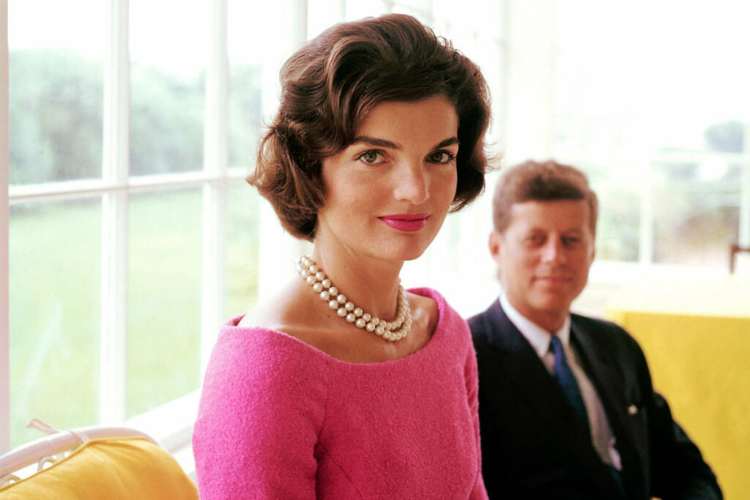
Jacqueline Kennedy was renowned as an icon in aesthetics, art, fashion, and other creative fields, especially fashion. Her outfits from her time as the first lady even today are still often displayed. Before being the first lady, Kennedy worked as a photographer and columnist. She is one of the most admired people in American history, according to Gallup.
As First Lady Jackie focused on preserving the White House’s artwork and interior decoration during her time as First Lady, and she traveled extensively with and without the President, bringing her charisma to various political conversations. In the Siena Research Institute’s study, she initially ranked number 8 in 1982 but subsequently climbed up the ranks to reach 4th place in 2003.
3. Michelle Obama
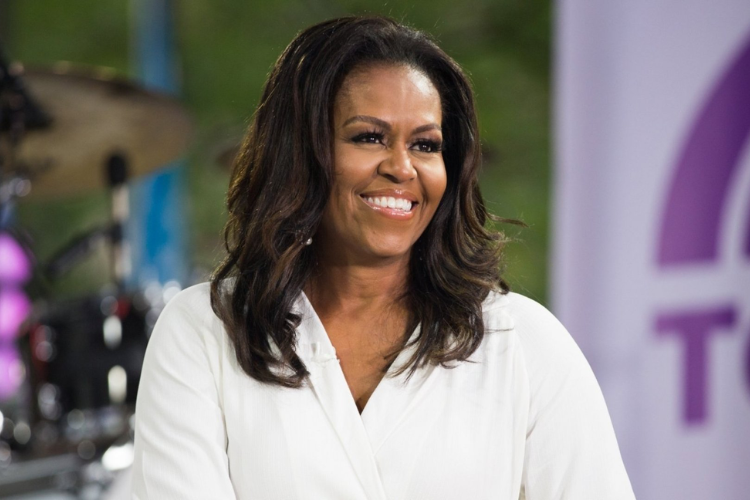
During her time in office, Michelle Obama had a 66% approval rating, even though recent first ladies tend to receive less adoration compared to those from the past. She is also one of the most educated first ladies to date and worked with President Obama on policy initiatives during her time in the White House.
One of her key advocacy efforts was battling childhood obesity, and she launched several campaigns to encourage healthy eating and exercise. Michelle’s advocacy for healthy eating and exercise had a significant impact on American society, and her efforts to change school lunch standards were particularly noteworthy.
4. Lady Bird Johnson
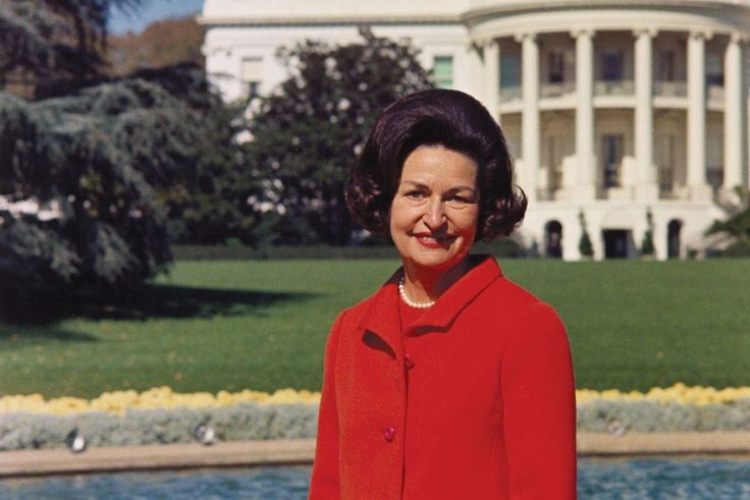
Lady Bird Johnson is well-known for her efforts towards environmental protection. She was the first of the first ladies to directly interact with Congress, having her own politically motivated staff to help her in the process. With her staff’s help, she was able to successfully advocate for the Highway Beautification Act, which left her legacy.
Johnson had a strong sense of finance and investing. Her financial contributions played a significant role in her husband Lyndon B. Johnson’s political campaigns and career. Besides her political work, Lady Bird Johnson was also recognized as a socialite with great hosting skills. According to Siena Research Institute, she is consistently among the top 7 first ladies.
5. Hillary Clinton
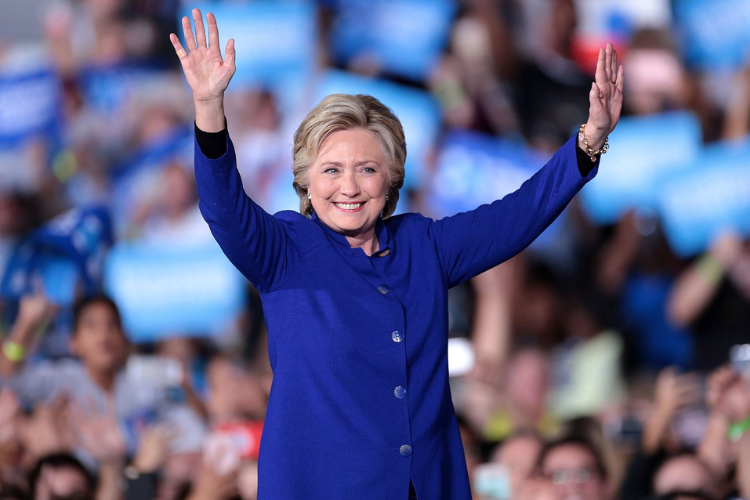
Despite the controversy surrounding her bid for the White House, Hillary Clinton received a 66% approval rating during her time as first lady. Her primary cause during her tenure as first lady was centered around healthcare, and she was also an advocate for legislation that aided adoption, including the Adoption and Safe Families Act.
However, both Hillary and her husband were involved in the Whitewater scandal. But beyond her time as a first lady, she has had a long political career including serving in Congress and as Secretary of State. She also won the popular vote in the 2016 presidential election but was not elected.
6. Rosalynn Carter

Despite her approval rating of only 58% during her time in office, Rosalynn Carter, who served as the First Lady during President Jimmy Carter’s administration, is generally viewed positively by the American people. She ranked fifth in the Siena Research Institute’s survey in 1993 and sixth in 2003.
Carter was active in her husband’s presidency, attending cabinet meetings and representing the US in Latin America. She pushed for mental health reform and testified before the Senate in support of the Mental Health System Bill, which was passed into law. She is also a highly regarded advocate and writer in American society.
7. Betty Ford

Betty Ford assumed the role of first lady from 1974 to 1977 after serving as second lady. Following Richard Nixon’s resignation, her husband assumed the position, which made her unexpectedly the first lady. Despite this unexpected transition, she became one of the most beloved first ladies in American history, with her approval rating remaining steady at a high 75%.
Ford was known for being much more progressive than her husband and many members of her political party, and was passionate about women’s rights, even advocating for women’s reproductive rights. Moreover, she sought to tackle the issue of substance abuse. In Siena Research Institute’s study, she has consistently ranked in the top 9.
8. Laura Bush

Laura Bush received the 24th spot in the Siena Research Institute’s 2003 survey, which was conducted during her husband’s term. While Americans tend to view the present more pessimistically, her high approval rating of 76% creates a dissonance with her low ranking.
In retrospect, Bush is often respected and admired for her focus on education during her time as the first lady. She also played a crucial role as a public figure during the tragedy of 9/11 and even hosted a concert to raise funds for the families of the victims.
9. Barbara Bush
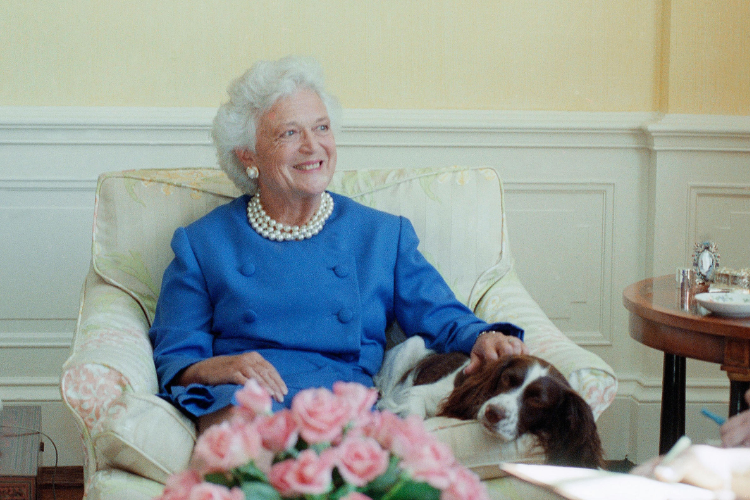
Barbara Bush was a passionate advocate for childhood literacy and actively participated in multiple literacy-focused organizations. She also supported reproductive and civil rights, particularly LGBT rights, and raised awareness about AIDS. Her advocacy often clashed with her own party’s policies or platform, which was striking.
In 2019, it was revealed that she no longer considered herself a Republican at the time of her death. During her husband’s presidency, Barbara made an effort to continue the work of previous first ladies in maintaining and restoring the White House. Her efforts were well-received by the public, and she secured a 72% approval rating.
10. Pat Nixon

Pat Nixon maintained a 54% approval rating during her time as First Lady, despite ranking low at number 37 in the Siena Research Institute’s survey. This percentage is notable, given the controversy surrounding her husband’s involvement in the Watergate scandal.
Nixon’s major initiative was to encourage volunteerism, and she believed in starting at the local level to address issues within communities. One of the volunteer groups she participated in was Women in Community Services. Additionally, she was known for her travels and conversations with key political figures both domestically and internationally, thus playing a role in American diplomacy.
11. Nancy Reagan
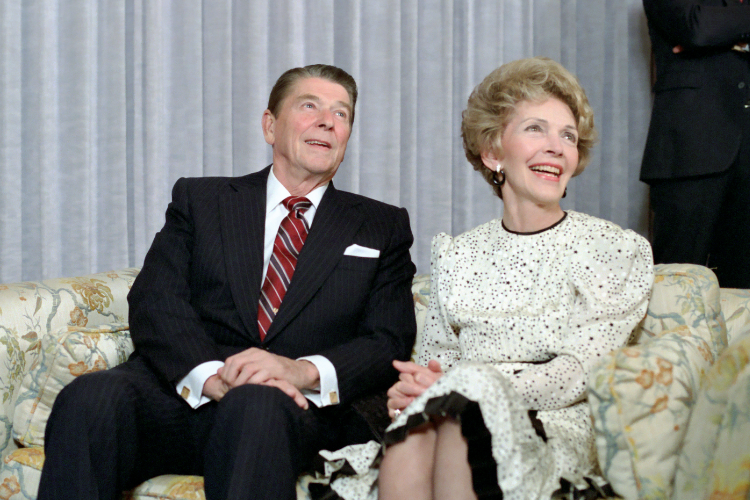
In 1981, Nancy Reagan’s approval rating reached a low of 28%, but she managed to increase it to 56% by 1989. Despite this improvement, history ranks her at number 39 in the Siena Research Institute’s 1982 survey. However, her ranking improved significantly by 2003, reaching number 28.
People’s opinions of Nancy tend to change rapidly, but she remains one of the most well-known first ladies. During her time as first lady, Nancy focused on a drug awareness campaign and launched the “Just Say No” initiative. Interestingly, she was known to consult astrology for advice on keeping her husband safe, particularly after an assassination attempt.
12. Mamie Eisenhower

In Siena Research Institute’s 1982 survey, Mamie Eisenhower was ranked low at 31, but she had moved up slightly to number 27 by 2003. Before her husband assumed the role of President of the United States, she lived with him in many military postings. One of the first things she did after moving into the White House was to throw a picnic with her staff to celebrate.
Eisenhower was known for her clothes, jewelry, cooking – especially her fudge – and her décor. She was often seen in a shade of pink that would later come to be known as “Mamie pink.” Additionally, she was the first to decorate the White House for Halloween. Although not as politically influential as other first ladies, Mamie was known for her outgoing personality and dedication to upholding high society standards.
13. Melania Trump
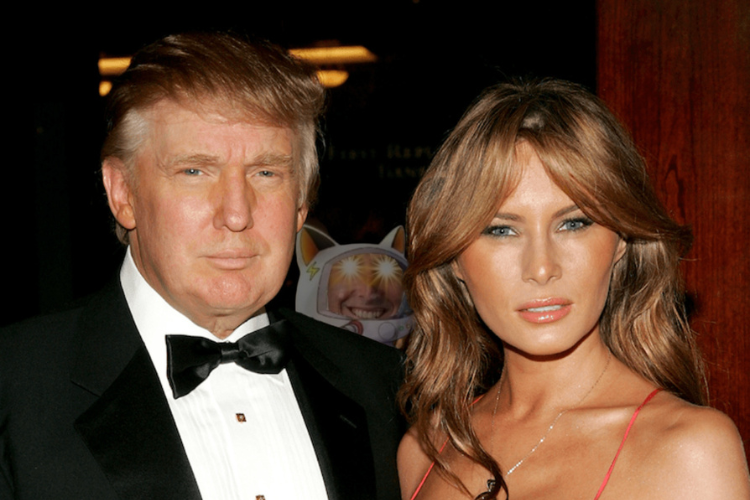
Melania Trump was one of the most controversial first ladies in American history. During her husband’s presidency, she was known for taking a backseat and remaining quiet about his policy initiatives. However, she eventually announced a campaign for cyberbullying awareness, which many criticized as hypocritical given her husband’s history with Twitter.
Despite this, her approval rating remained low at only 42%. When her term as first lady ended, she broke with tradition by not hosting a tea and tour with Dr. Jill Biden during the transition of power.
14. Dr. Jill Biden
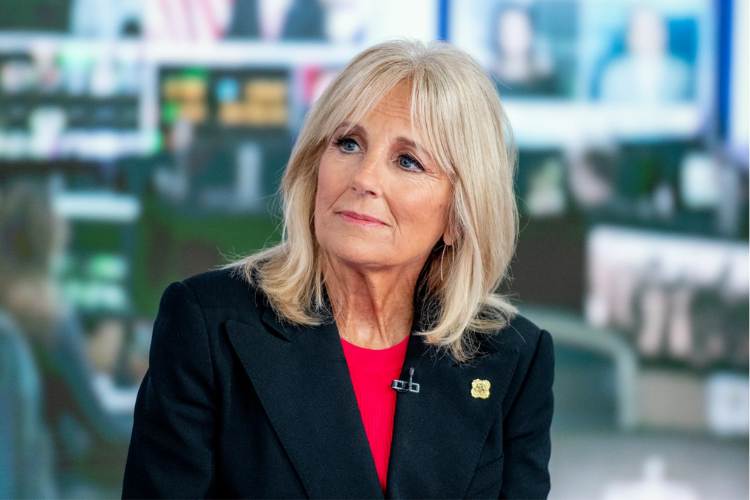
Dr. Jill Biden earned her doctoral degree in educational leadership from the University of Delaware. She is a professor and academic and is the only first lady in US history to maintain a paying job while her husband is in office, such as her role at NOVA.
She has also focused on helping military families, and promoting free community college and education access. As a present-day political figure, her exact approval rating with the general public is still being formulated.
15. Bess Truman

As first lady, Bess Truman ranked 15th in the Siena Research Institute’s 1982 survey. She disliked the social scene, politics, and lack of privacy that came with the job. However, she still participated in organizations such as the Women’s National Democratic Club and the Washington Animal Rescue League.
Despite this, she was involved in several organizations such as the Women’s National Democratic Club and the Washington Animal Rescue League. She also served as the formal entertainer, focusing on maintaining the president’s social status and reputation.
16. Edith Roosevelt
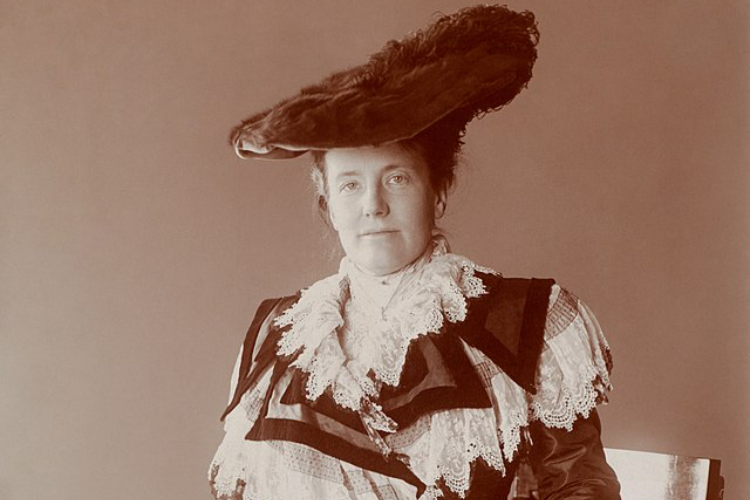
After President William McKinley’s assassination, Edith Roosevelt became the first lady. She expanded social events at the White House, influencing politically involved wives to do the same. Edith subtly influenced policy by providing her husband with key newspaper articles and liaising between critical political figures and the president.
Moreover, she played a significant role in renovating the White House in 1902, making it a more modern and functional living space. In the Siena Research Institute’s 1982 survey, she was ranked 10th among first ladies.
17. Lou Hoover
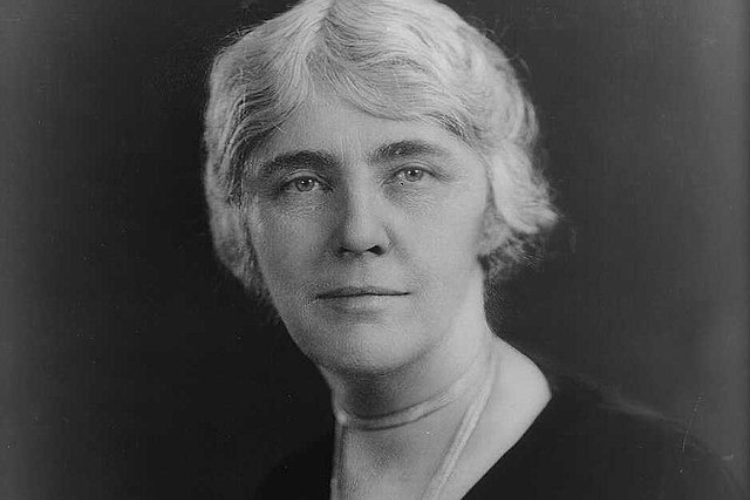
Lou Hoover was an academic and scholar who studied various foreign languages. She was a strong advocate for various causes, particularly volunteerism, and often appeared on radio broadcasts to promote them.
Outside of politics, Lou was heavily involved in the Girl Scouts of the United States of America. She served as the national GSUSA president on two separate occasions, and in the Siena Research Institute’s study, she ranked 11th in 1982 and has maintained a consistent ranking since then.
18. Ellen Wilson
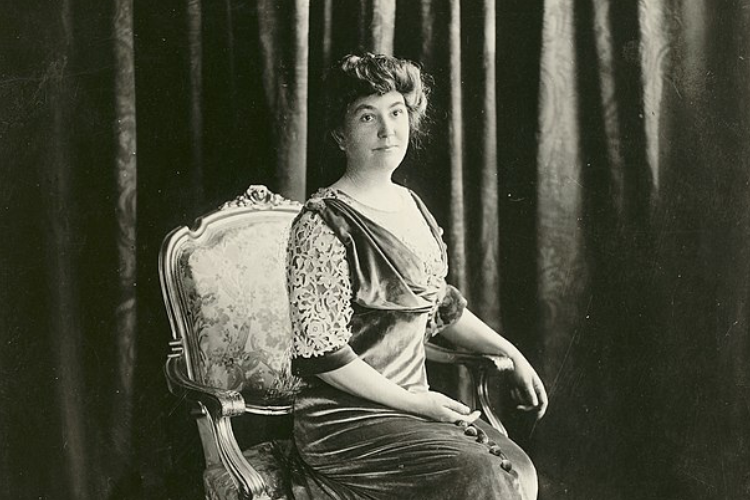
Ellen Wilson, President Woodrow Wilson’s first wife, was an artist with a background in the arts. She spent much of her time in the White House creating, painting, and sketching. Ellen had her own studio in the White House and donated her work to charitable causes. She also hosted successful yet simple parties in the D.C. social scene.
One of Ellen’s leading causes was focused on improving D.C. housing, particularly for Black Americans. Despite her short time in the White House due to her untimely death in 1914, history looks back on her fondly, ranking her at 16th according to Siena Research Institute’s 1982 survey.
19. Abigail Adams
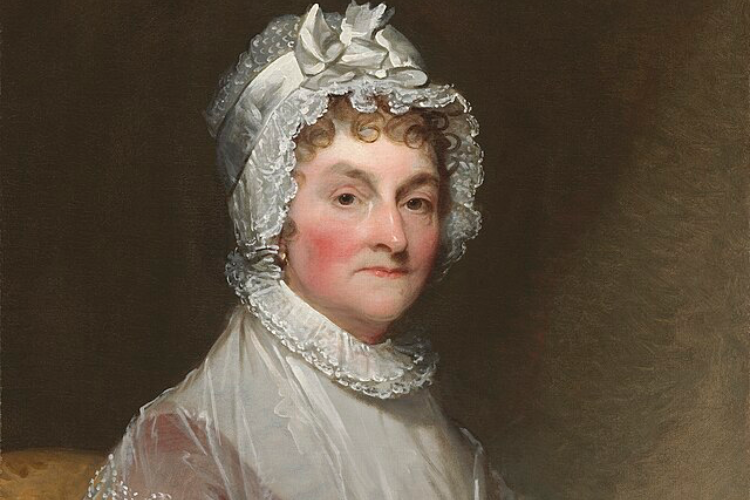
Abigail Adams, the second most popular first lady according to the Siena Research Institute’s study, was a trusted advisor to her husband, President John Adams. She was an intellectual who often consulted on important issues that shaped American history. She was also the mother of President John Quincy Adams.
During her husband’s term, she served as the formal entertainer, focusing on maintaining the social status and reputation of the president and the White House. At the time, prestige was crucial in political negotiations. Unlike her predecessor, Martha Washington, she took an active role in policy and advocacy.
20. Dolley Madison
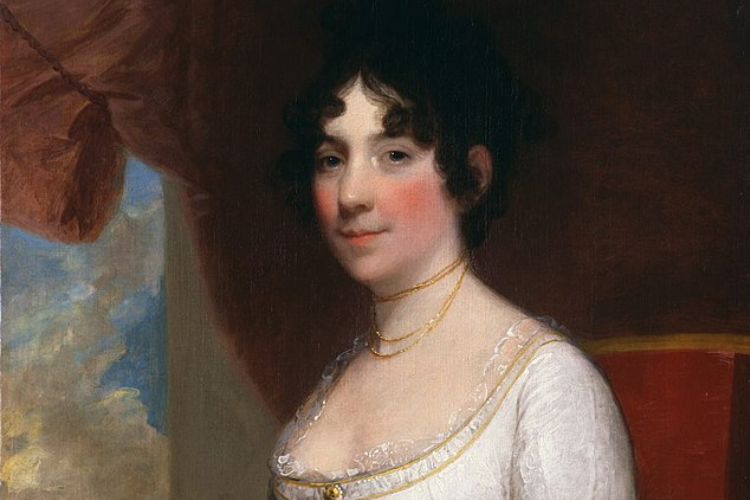
Dolley Madison, the fourth first lady of the United States, is known for her efforts towards bipartisanship during her tenure. She had ample opportunity to shape the role of first lady, as the expectations for the position were still being developed at that time.
She solidified the social role of the first lady by focusing on party planning and bridging political gaps. She emphasized the importance of social capital during her tenure of 1809 to 1817 and highlighted its significance in ensuring a successful presidency.
21. Martha Washington
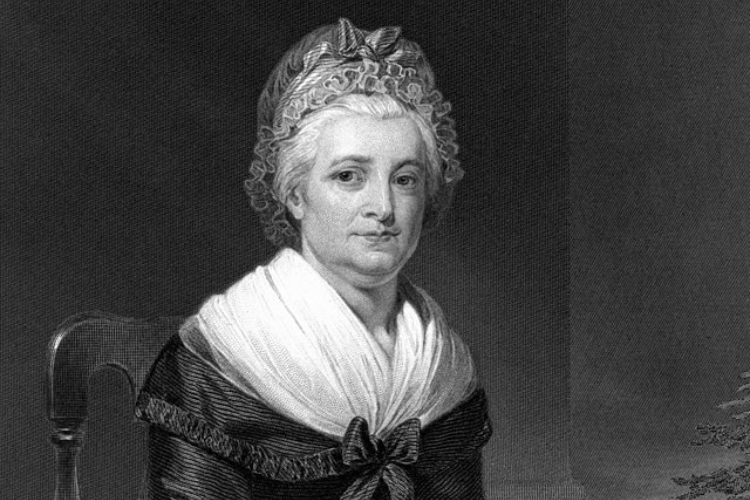
Martha Washington, the first first lady of the United States, established the standard for future first ladies by navigating an undefined role. Initially hesitant about her husband’s presidency, she became known for her kindness and down-to-earth nature while dedicating herself to social affairs and event hosting.
History looks back at Martha Washington favorably, with the Siena Research Institute consistently ranking her among the top 13 first ladies. Despite the challenges of being the first lady, Martha served as a model for future generations and played an important role in shaping the office of the first lady into what it is today.
22. Louisa Adams
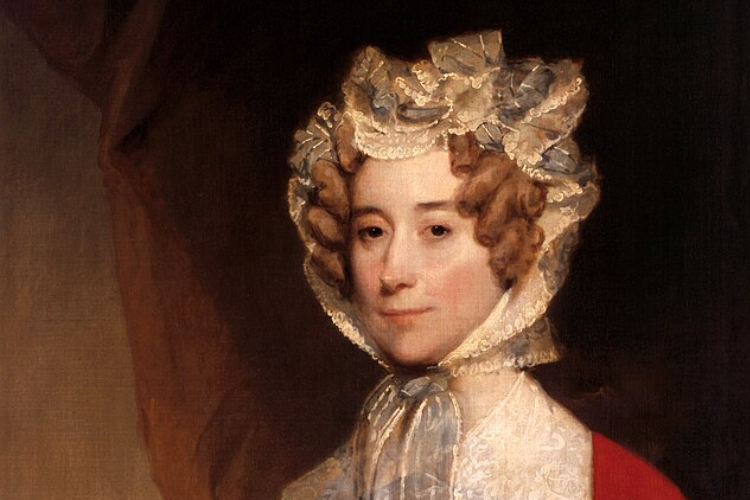
Louisa Adams, the first lady during President John Quincy Adams’ term from 1825-1829, ranked 14th in the Siena Research Institute’s 1982 survey. However, she did not attend her husband’s inauguration due to the circumstances of his victory.
John Quincy Adams had made a deal with Henry Clay, the Speaker of the House, to secure votes in exchange for the position of Secretary of State. Despite her disapproval, Adams made the most of her time as first lady, advocating for women’s rights and being an abolitionist.
23. Grace Coolidge
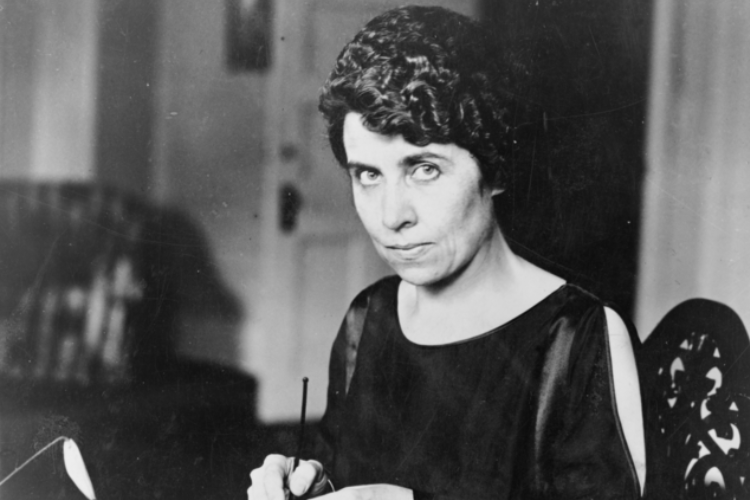
Grace Coolidge was ranked 17th in the Siena Research Institute’s 1982 survey and was known for avoiding politics. While her husband became more involved in political matters, she continued to shy away from it. Instead of making commentary on timely political topics, she focused on causes that had widespread support, particularly charitable organizations such as the Red Cross.
Following her son’s passing, the public sympathized with Grace, and she continued in her role and work nonetheless. Even after her husband’s presidency, she continued her nonprofit work with various communities, including Jewish refugees and the deaf. Additionally, she wrote and contributed to multiple magazines.
24. Mary Todd Lincoln
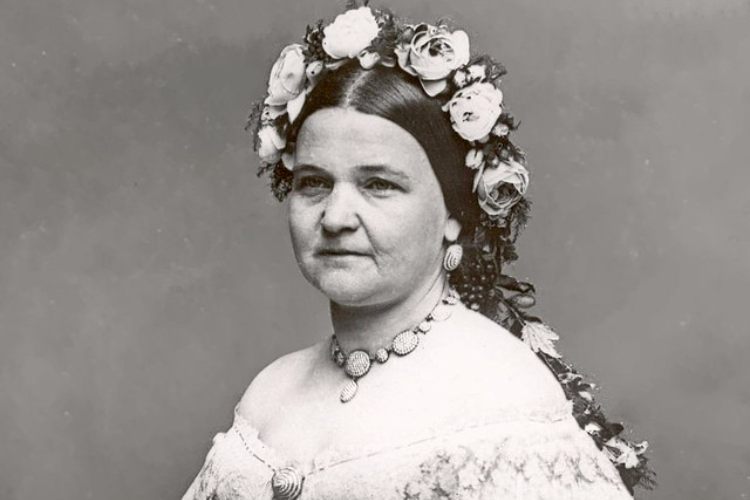
Mary Todd Lincoln was ranked last in the 1982 Siena Research Institute survey. Despite her wealthy background and slave-owning family background, she was the first lady during a time of harsh political tension and a divided country.
She was often criticized for her heavy personal spending and the cost of refurbishing the White House. Nonetheless, she remained loyal to the Union and supported Abraham Lincoln’s efforts. Her rigid manners were also frequently criticized.
25. Florence Harding

Florence Harding, who served as the First Lady of the United States from 1921-1923, consistently ranks at almost last place in each of the Siena Research Institute’s surveys. Despite this, she was an influential figure who was known for throwing elegant and elaborate White House parties.
Harding urged her husband to make the White House more public by opening it up to tourists. She was also highly regarded for her celebrity status and vocal opinions. She was referred to as “The Duchess” and was publicly distinguishable.
26. Martha Jefferson Randolph
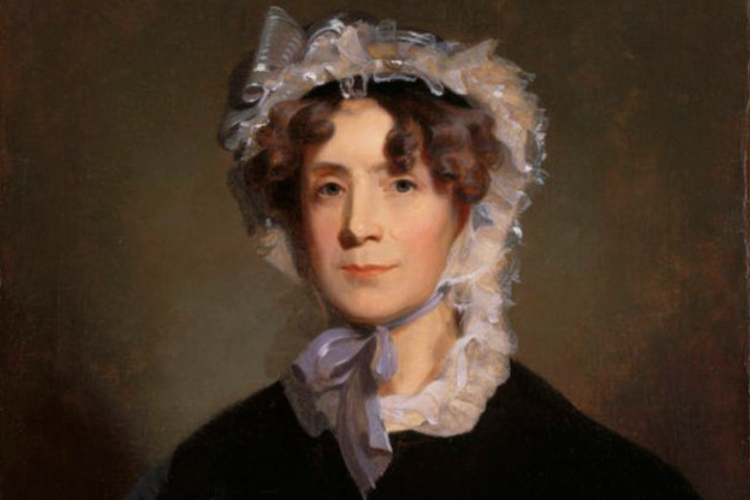
After his wife died before he became president, Thomas Jefferson’s daughter Martha Jefferson Randolph took on the role of first lady. She was sophisticated and spent much of her life in Paris, where she met with world leaders. She urged her father to end slavery in America after learning about the possibility of a slave-free nation through her private education and travels.
During her time in the White House, Dolley Madison also assisted with hosting responsibilities. Randolph ranked 18th in the Siena Research Institute’s 1982 survey.
27. Sarah Polk

Sarah Polk was the first lady from 1845 to 1849. She was an adept hostess, supporting her husband’s career and political ambitions by providing elaborate meals and drinks. She also advised and helped with speech writing and campaigned alongside him, even writing for a newspaper to support his political campaign.
Sarah Polk was vocal about her support for the concept of manifest destiny, which was a controversial subject at the time. Despite her contributions to her husband’s presidency, the Siena Research Institute study has found that the American public looks back on her as a mid-tier first lady, ranked 22nd in 1982.
28. Emily Donelson

Emily Donelson became the White House hostess after President Andrew Jackson’s wife passed away. She was Rachel Jackson’s niece and her husband served as the president’s assistant. Donelson was sociable and even befriended President Jackson’s rival, President John Quincy Adams.
However, Donelson and President Jackson had a falling out due to the controversy surrounding Peggy Eaton. She refused to return to the White House, resulting in someone new assuming the hostess’s responsibilities. History views Emily in a nuanced light, and the Siena Research Institute ranked her 26th in their 1982 survey, likely due to Jackson’s controversial presidency.
29. Julia Gardiner Tyler
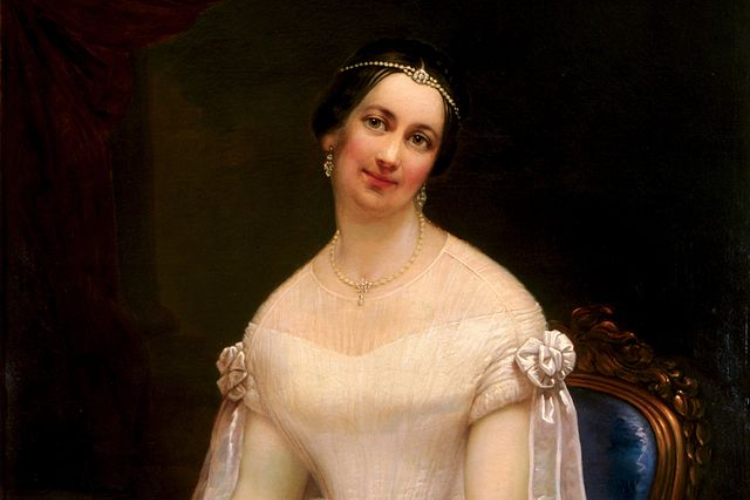
Julia Gardiner Tyler was ranked number 27 in Siena Research Institute’s 1982 survey of first ladies. She was the tenth first lady in American history and assumed a hosting and social role, focusing on maintaining public and social appearances.
Tyler is famous for suggesting “Hail to the Chief” to introduce her husband. She threw a big party with 3,000 guests after leaving the White House. She was survived by Julia Gardiner Tyler Wilson, a Kappa Delta Sorority founder.
30. Angelica Van Buren

Angelica Van Buren, President Van Buren’s daughter-in-law, served as first lady after the death of Hannah Van Buren. Former First Lady Dolley Madison introduced Angelica to Abraham Van Buren II, and Angelica’s status helped President Van Buren gain support in the Old South.
Angelica aimed to introduce European-style changes to the White House after a trip to England. Although not well received by Americans, she is still remembered as a significant figure in American history as the first foreign-born first lady.
31. Abigail Fillmore
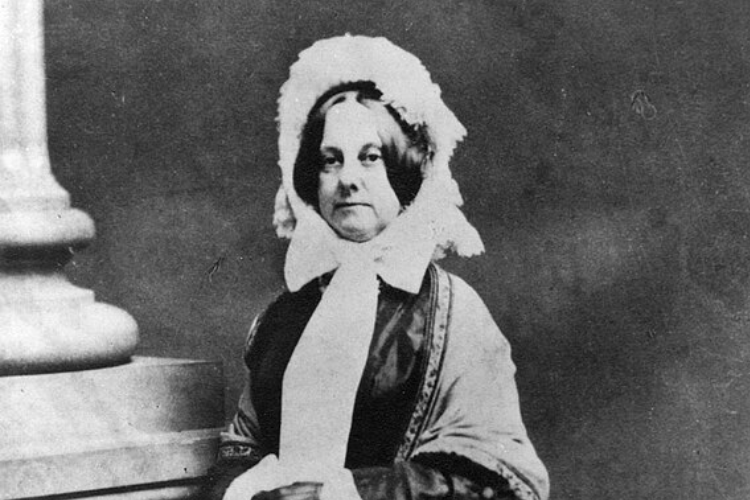
Abigail Fillmore was the First Lady from 1850-1853 when her husband, Vice President Millard Fillmore, became President. Despite being a teacher and scholar, she was surprised to find that the White House had no library. She established a literary salon and purchased books with $2,000 from Congress.
Her initiative was noteworthy for its impact on the White House and its cultural legacy. The library she created was used by several of her successors, including First Lady Jacqueline Kennedy, who took inspiration from Abigail’s salon for her own famous events.
32. Eliza Johnson
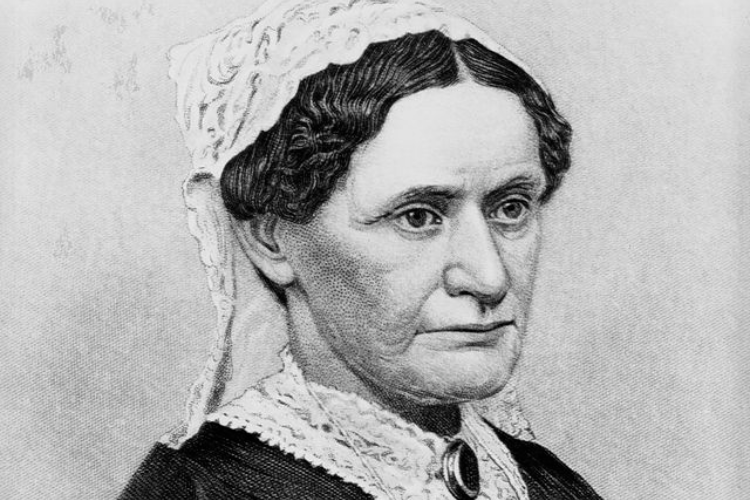
Eliza Johnson was a private first lady who supported her husband’s political career behind the scenes. Her privacy became more difficult to maintain when her husband, the vice president, became president after the assassination of Abraham Lincoln.
During her time as the first lady, Johnson was bedridden with tuberculosis, and she rarely made public appearances. Despite her illness, she did venture out on two occasions during her husband’s term, once at a reception for Queen Emma of the Kingdom of Hawaii and once at her husband’s 59th birthday party.
33. Julia Grant
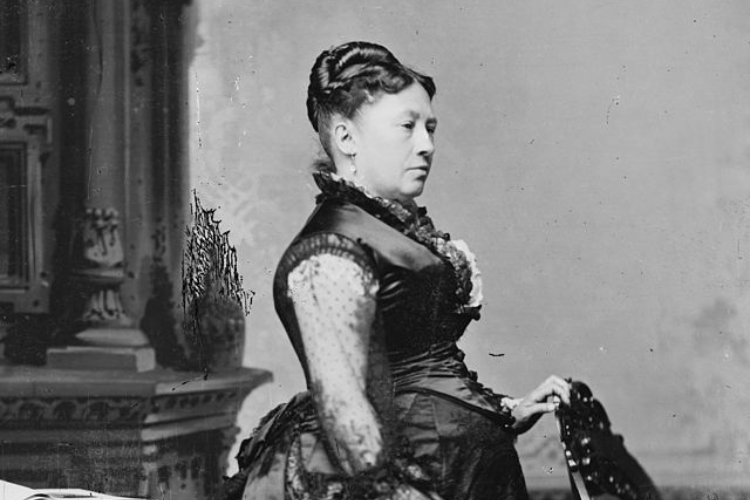
Julia Grant was one of the first First Ladies to embrace the role fully, having been heavily involved in her husband’s campaign. Upon his election, he turned to her and said, “And now, my dear, I hope you’re satisfied.”
She certainly was, becoming an acclaimed hostess as First Lady while also championing women’s rights and emphasizing the importance of her role. Despite her successes in the White House, Julia was devastated upon learning that her husband would not seek a third term.
34. Lucy Hayes

Lucy Hayes, the wife of Rutherford B. Hayes, was an unconventional First Lady in many ways. She was an ardent supporter of African American rights, which was a controversial stance in post-Civil War America. Historian Emily Apt Geer also noted Hayes’ advocacy for women’s rights, relatively speaking.
Despite potential criticism from 20th-century feminists for not supporting women’s suffrage, Hayes served as an admirable role model for the nation as a hostess, homemaker, and advocate for others. She possessed a sincere interest in politics and received substantial education, which boded well for future advancements in women’s status within American society and intellectual circles.
35. Lucretia Garfield
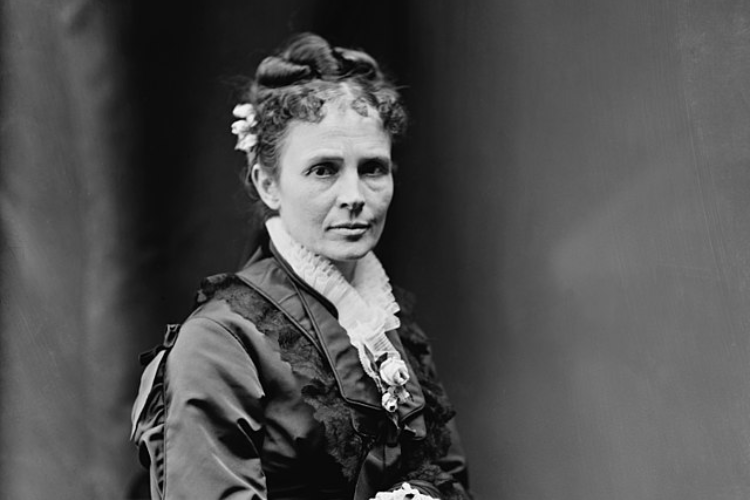
Lucretia Garfield played a key role in her husband James A. Garfield’s presidential campaign by providing knowledge of the Republican Party. As First Lady, she was heavily involved in cabinet choices and White House renovations.
Shortly after her husband’s term began, she contracted malaria and was still recovering when her husband was assassinated in July. Despite this tragedy, she spent the rest of her life preserving her husband’s legacy and demonstrating her commitment to their shared political goals.
36. Frances Cleveland

At just 21 years old, Frances Cleveland is known for being the youngest American First Lady of all time. She married President Grover Cleveland, who was 28 years her senior and had entered the White House as a bachelor in 1886. The two remained together through both of his non-consecutive terms and the rest of his life.
During her time in the White House, Frances was a popular First Lady. However, her later controversial political views, including opposing women’s suffrage, have soured her reputation in the eyes of some.
37. Ida McKinley
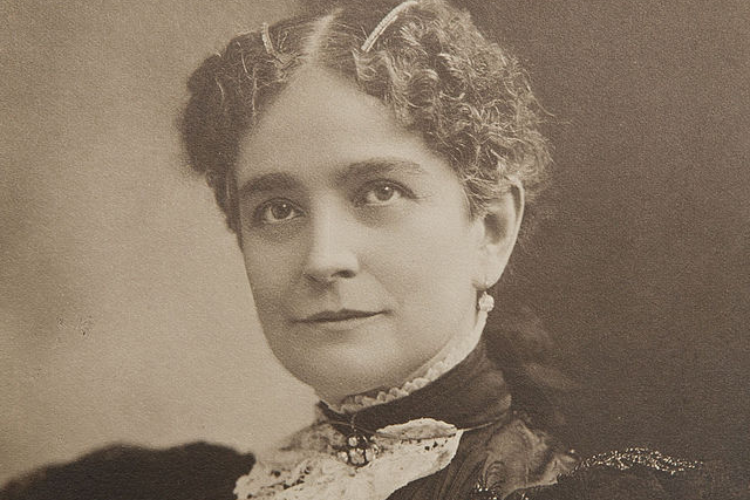
Ida McKinley, a tragic First Lady like Mary Todd Lincoln and Jackie Kennedy, faced tragedy before her husband, William McKinley, became president. Her two daughters, Katherine McKinley and Ida McKinley, passed away at a young age, leaving her devastated.
After her husband became president, he became overprotective and shielded her from social expectations. His assassination in 1901 was devastating for her, who lost her will to live and died less than six years later.
38. Helen Taft
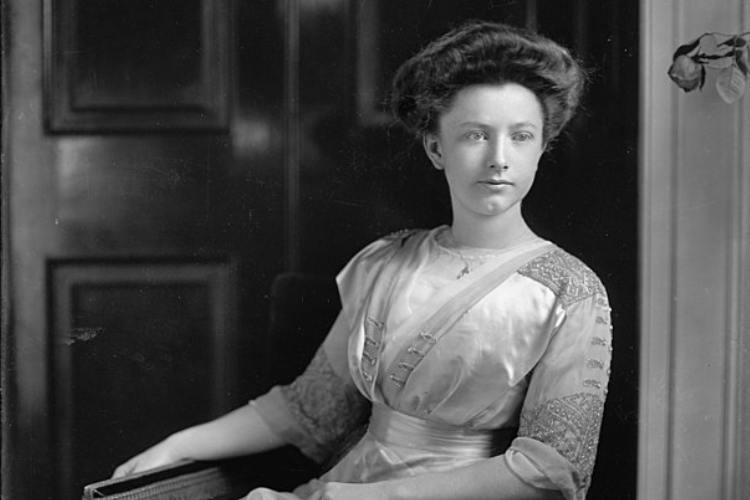
Helen “Nellie” Taft is best known for her contribution to the beautification of Washington D.C. during her husband’s presidency. She planted over 3,000 Japanese cherry trees around the Tidal Basin and on Capitol grounds, personally planting the first two saplings with Viscountess Iwa Chinda, the wife of the Japanese ambassador, in a ceremony in 1912.
This effort has resulted in the annual National Cherry Blossom Festival, attracting millions of visitors to the city every year. In addition to her work in beautifying the city, Taft also expanded the traditions of White House receptions and other social events.
39. Edith Wilson
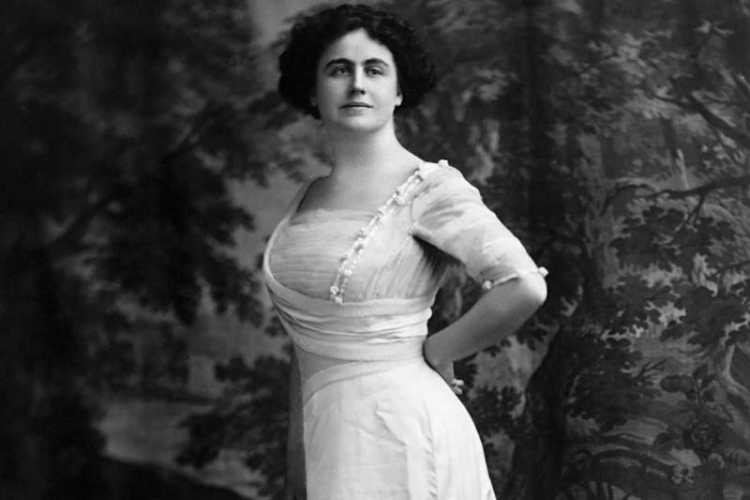
Edith Wilson, one of the most controversial First Ladies in U.S. history, married President Woodrow Wilson in March of 1915, shortly after his first wife passed away. During her early years as First Lady, she was relatively well-liked and became the first of her position to visit Europe.
However, in 1919, President Wilson suffered a massive stroke, leaving him bedridden and paralyzed. Edith and his doctors hid the true extent of his condition from many in the public and government. The First Lady became the only communication between Wilson and his cabinet, leading to claims that she had taken over his power.
40. Margaret Taylor
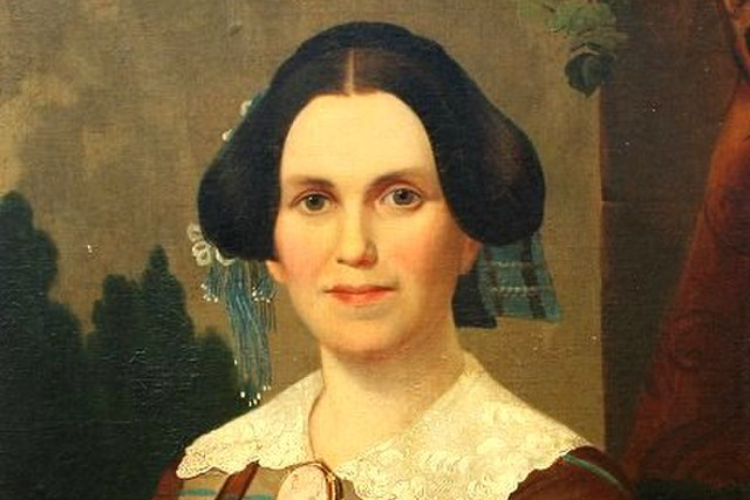
Margaret Taylor was the first lady of the United States from 1849 to 1850 during Zachary Taylor’s presidency. However, he passed away 16 months after his inauguration. As she was accustomed to frontier life, Taylor disliked the traditional role of the first lady as a White House hostess.
This resulted in Margaret often hiding on the second floor and only appearing to host close friends and family. She was largely disengaged from her husband’s administration and delegated most of her first-lady duties to her daughter, Mary Elizabeth Bliss.
41. Jane Irwin Harrison
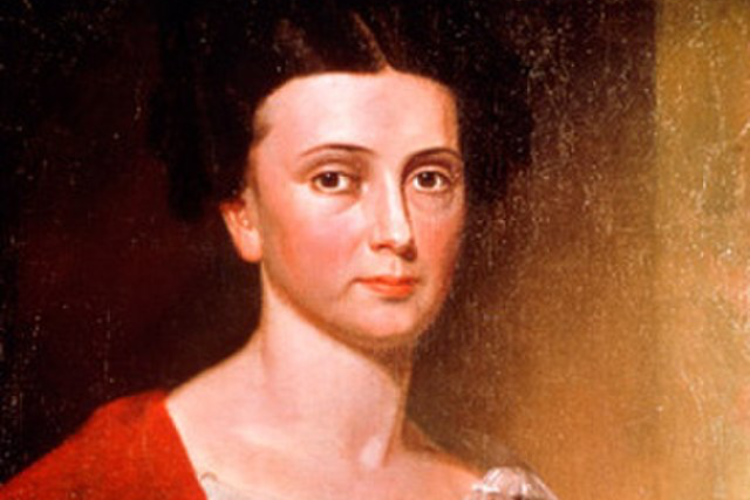
Jane Irwin Harrison served as the first lady during William Henry Harrison’s short presidency. She acted as hostess during his inauguration since Anna Tuthill Harrison, the President’s wife, was too ill to attend. Unfortunately, President Harrison passed away only 31 days into his presidency, which remains the shortest in American history.
Anna Tuthill Harrison was the only presidential wife to never visit the Capitol during her husband’s presidency. Despite her absence, her husband’s term was marked by significant events such as the Webster-Ashburton Treaty with Britain and the annexation of Texas.
42. Mary Elizabeth Bliss

Mary Elizabeth Bliss was the daughter of President Zachary Taylor and First Lady Margaret Taylor. Despite her mother’s disapproval of the social obligations that came with being the First Lady, Mary Elizabeth, nicknamed Betty Bliss, took on most of her tasks.
At the age of 24, she would occasionally host friends and family at the White House. Unlike her mother, she was enthusiastic about her presidential duties and willingly obliged.
43. Jane Pierce
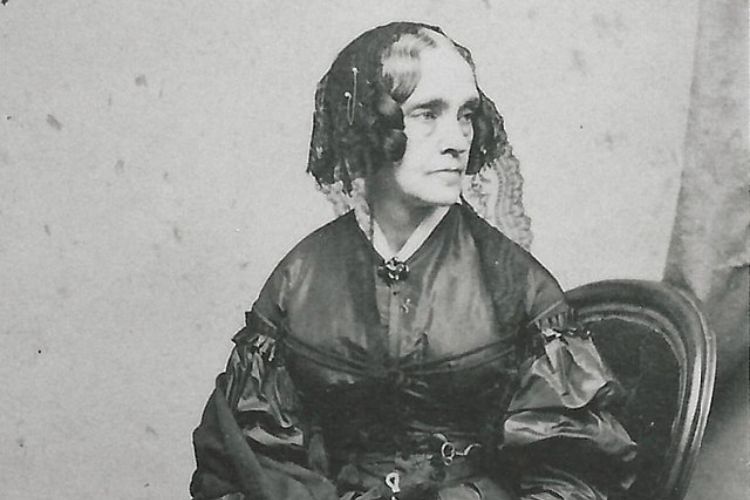
From 1853 to 1857, Jane Pierce served as the first lady during Franklin Pierce’s presidency. She was upset by her husband’s Democratic nomination as he had previously lied to her about running for office. Shortly before their move to Washington D.C., their last surviving son, Benjamin, passed away in a train crash.
During the first few months of her time in the White House, Jane declined to take on any traditional roles of the first lady, instead delegating them to her aunt, Abby Kent-Means. This allowed Jane to grieve in private and avoid the public spotlight while she coped with the tragic loss of her son.
44. Letitia Tyler
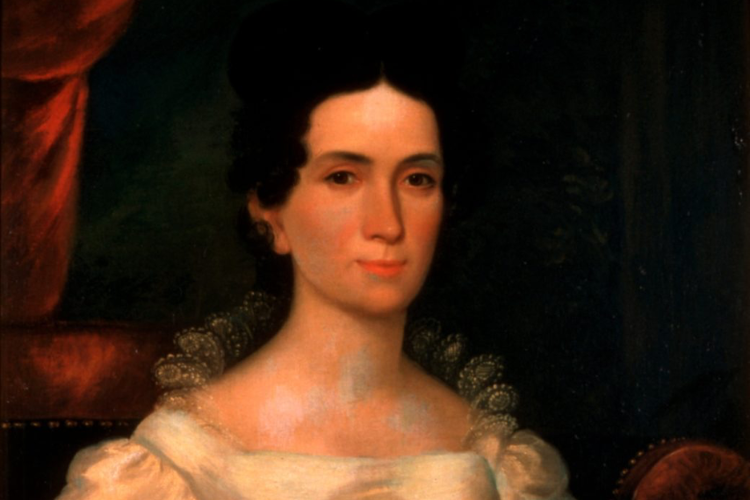
Letitia Tyler, the wife of the 10th President, John Tyler, assumed the role after the sudden death of President William Henry Harrison. Unfortunately, she suffered from poor health and was unable to fulfill many of the traditional hostess duties expected of the first lady.
Upon moving into the White House, she was bound to a wheelchair and remained in the upstairs living quarters for the majority of her husband’s tenure. Despite her physical limitations, she remained involved in the goings-on of the White House and served as an advisor to the President.
45. Sarah Yorke Jackson

Sarah Yorke Jackson, the daughter-in-law of President Andrew Jackson, shared the responsibilities of the first lady with Jackson’s niece, Emily Donelson, after the death of his wife. During Jackson’s presidency, these two women became the first and only duo to co-serve as White House hostesses in American history.
Although the arrangement was reportedly mildly awkward for the two, they managed to make it work rather seamlessly. Later on, Jackson took over completely when Donelson became ill with tuberculosis and passed away in 1836.
46. Harriet Lane

Harriet Lane, the niece of President James Buchanan, served as the acting first lady during her uncle’s term. She is often regarded as the original “modern” first lady for her unique fashion sense and charming demeanor.
Historians often compare her popularity to that of Jacqueline Kennedy. In her will, Harriet left money for the construction of a new school on the grounds of the Washington National Cathedral.
47. Elizabeth Monroe

Elizabeth Monroe served as the first lady during her husband James Monroe’s presidency. Due to her chronically poor health, she delegated many of her hostess duties to her daughter, Eliza Monroe Hay.
However, she was not as well-regarded as her predecessor, Dolley Madison, who set a high standard for subsequent first ladies. Elizabeth and her daughter received widespread criticism for their rather pompous demeanor, as they attempted to make White House events more socially exclusive.
48. Anna Tuthill Harrison
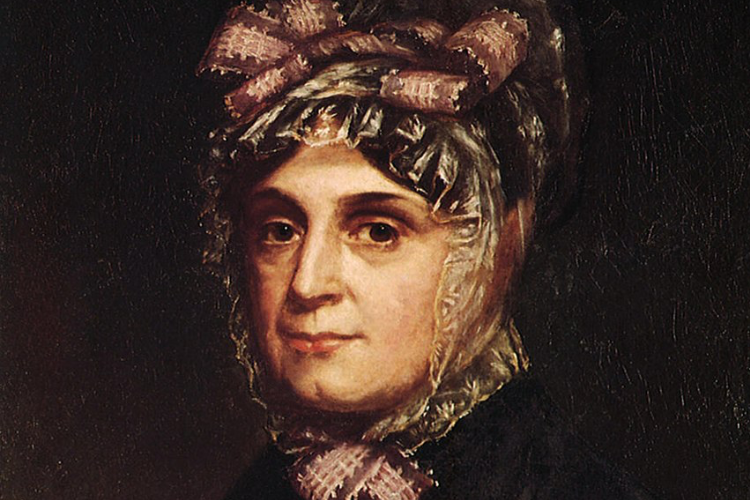
Anna Tuthill Harrison was reportedly unhappy when her husband, William Henry Harrison, was elected president in 1840. She was concerned about how she would be received by the public and whether she would be able to fulfill her duties as first lady.
Due to poor health, she did not accompany the president to his inauguration in Washington. She sent their daughter-in-law Jane Irwin Harrison instead. Anna planned to join her husband later, but unfortunately, she received news of his passing from pneumonia while preparing for the journey.
